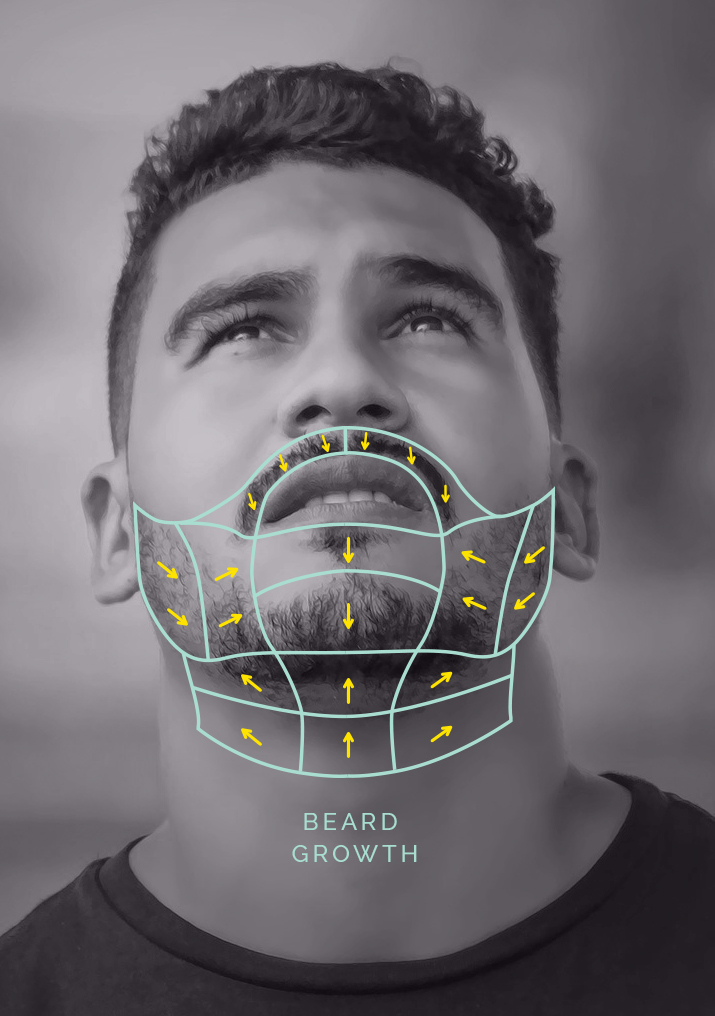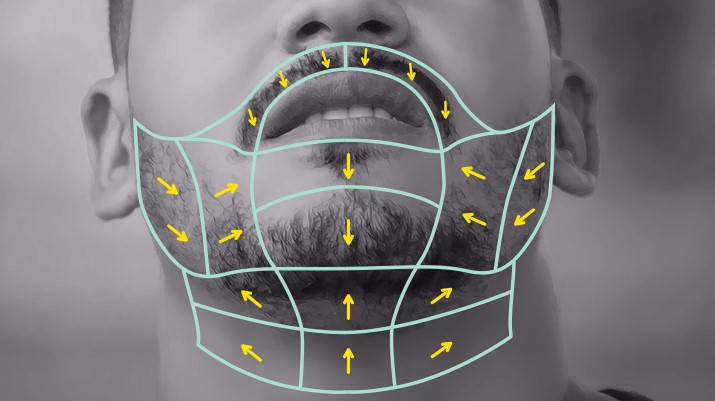When it comes to shaving, are you a With the Grain (WTG), an Against the Grain (ATG), or an Across the Grain (XTG) kind of guy? For a lot of guys starting out in the wet shaving world, this question is the last thing on their mind. It’s just another thing to think about, when making a lather and choosing a razor seems complicated enough.
But once you get settled into a routine, it’s worth spending some time examining your own hair growth. Most men don’t realize it, but understanding and mapping the direction of their facial hair can make a big difference in the quality of their shave. Deciding which direction to move the razor will help avoid ingrown hairs, prevent redness, and help you get that baby smooth shave.
Finding the Grain
Knowing which way your hair grows on different parts of your face is half the battle. Hair growth patterns differ for each person, but there are some general trends; hair grows downward in the mustache and chin areas and upward on the neck and throat. You can see that this model’s facial hair follows this fairly predictable pattern.

Discovering the direction your own hair grows is actually fairly simple for most men. Let your facial hair grow for a few ways. Snap a photo, and see if you can spot any trends. Run your hands over your face, and feel which direction makes the hair smooth, and which direction of movement catches the hairs.
Another way is to use a cotton ball or cotton swap to test the direction. You’ll know that you’re going with the grain if cotton doesn’t get stuck in your hair. If it does, you’re most likely going against the grain.
If you want a really thorough investigation of your hair growth, take that photo, print it, and use it as a guide for your next shave. You can even create a shaving map like the one above, although most men will develop a feeling without needing the visual aid.
If you’re lucky, you’ll find that your hair grows in a fairly typical pattern. However, for a lot of men, their hair grows in all directions. Some men have spiral hair patterns on their neck, or cross-crossing hair growth, that will make shaving somewhat more complicated. However, don’t lose hope – knowing is half the battle!
And remember that hair growth may differ from side to side so don’t use the direction of hair on your left as a guide to shave the same spot on your right.
Using Your New Shaving Map

Tip: Having trouble gripping the skin on your face? Wet a finger, touch your alum block, and you’ll be able to move the skin exactly where you need it to go, no matter how slick your lather!
Now that you’ve carefully mapped out your hair’s growth patterns, what do you do with the information? It’s time to decide whether you want to shave with the hair, against the hair, or across it. Each style of shaving has benefits and drawbacks, and many shavers will do one pass with the grain, and a second against it (or even a third, across!)
Most shavers will begin by shaving with the grain. It’s the easiest and least irritating method of shaving, and although the shave won’t be as close, it’s a lot more forgiving. And for some guys, that’s good enough. But when you start to want that baby smooth shave, that’s when the fun begins. Start with a first pass following the direction of your shaving map. Use short, gradual strokes with your razor, taking care to approach from the right angles.
Once you’re finished, rinse off your face, and reapply the shaving lather (a great reason to keep a handy scuttle nearby – your lather will still be hot!) Now you’ve got a decision to make. Shaving across the grain means making perpendicular strokes – not in the direction of the hair, not against it, but sideways. It’s a milder form, and for some men it gives a closer shave while sparing them the irritation of a full against-the-grain shave.
After you’ve finished your second pass, you can either take a third pass going against the grain, or just run your hand over your face. If you feel any rough patches, apply a dab of lather and carefully re-shave those areas. Make sure you don’t skip on the lather, and fully rinse your razor each time. Don’t apply too much pressure – let the weight of the razor do the job.
As with every shave, be sure to prep your face and neck with a pre-shave cream or oil to help soften the hair and prevent irritation. Once you’ve finished shaving, rinse and moisturize your face and neck. Then take as long as you want to look in the mirror and admire the great job you did.
Conclusion
Now that you’ve finished the shave, examine your face. Did tracking the direction of your hair growth make a difference in your shave? Wait a few days, and see if irritation and redness is reduced. If you did make a shaving map, keep it for reference, but don’t worry – over time, you’ll get so used to your own unique hair growth patterns that the full shaving routine will become second nature!





